
Hindi Name : Badi Elaichi
Botanical Name : Amomum subulatum Roxb.
Family name : Zingiberaceae
Commercial part : Fruit (Capsule)
In Indian cuisine, black cardamom reigns supreme, particularly in robust and spicy dishes where its generous usage is celebrated. When gently crushed and incorporated, these cardamoms elevate and enrich the flavor profile of other ingredients. Sporting a size four to six times that of its smaller counterpart, black cardamom boasts a captivating taste, a mesmerizing aroma, and a tantalizing essence that awakens the palate. Its culinary magic extends to rice and meat creations, as well as an array of beverages and confections. An integral element of pan masala, it enjoys widespread popularity across India.
Within the realm of black cardamom, India stands unrivaled as the primary cultivator, basking in the exclusivity of this spice. Nestled amidst the sub-Himalayan expanse, the thriving production hubs encompass Sikkim and the Darjeeling district of West Bengal.
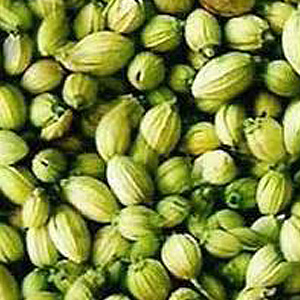
Hindi Name : Dhaniya
Botanical Name : Apiaceae
Family name : Coriandrum Sativam L
Commercial Part : Leaf & Seed
Coriander leaves, known as coriander green, enjoy popularity across Asia, gracing dishes in India, Thailand, Vietnam, and parts of China as a vibrant garnish. Beyond its decorative use, coriander serves as both fresh leaves and the dried ripe fruit of the annual herb with serrated leaves and branching stems.
The ripe fruit exudes a warm, nutty, and spicy aroma, while the leaves possess a robust scent. Beyond its culinary role, coriander stands as a fragrant spice treasured for both its condimental and medicinal attributes. Widely integrated into diverse cuisines, beverages, liquors, and perfumes, coriander flourishes under ample sunlight, moderate heat, and loamy, well-drained, moisture-retentive soil.
In India, it’s a cornerstone of curry powders and masalas, while in Ethiopia, it contributes to berebere, resembling Indian spice blends. Roasting or frying coriander amplifies its flavor, a practice embraced in India and Sri Lanka. Notably cultivated in Gujarat, Rajasthan, Madhya Pradesh, and Andhra Pradesh.
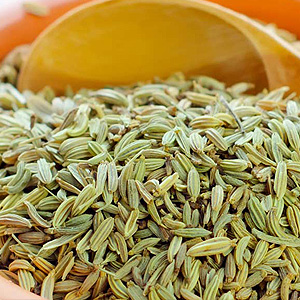
Hindi Name : Saunf
Botanical Name : Foeniculum vulgare
Family name : Miller Apiaceae
Commercial part : Fruit
Fennel, the dried aromatic mature fruit of an herbaceous plant, thrives in mild climates. Its seeds find utility across Asia and Europe, though extensive usage isn’t specific to any particular region. Fennel is a subtle presence, enhancing dishes across the Mediterranean, Arabic, Iranian, Indian, and Central European culinary landscapes. Notably, it plays a role in Chinese five-spice powder and the Bengali panch phoron blend.
Diverse nations hold varied beliefs and applications for fennel. In ancient India, it adorned dishes as both a condiment and culinary spice. Presently, India incorporates fennel to lend a sweet note to meat, fish, and seafood dishes, harmonizing with earthy bread aromas and imparting a unique touch to pickles and vinegar. Fennel Seeds also enjoy popularity as a post-meal Mouth Freshener in India. Cultivation thrives in Gujarat, Rajasthan, and Uttar Pradesh.
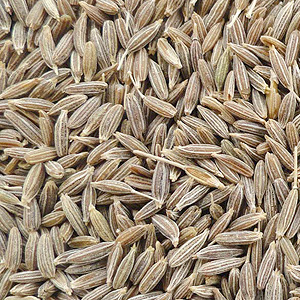
Hindi Name : Jeera
Botanical Name : Cuminum cyminum L
Family name : Apiaceae
Commercial part : Fruit
Cumin, an emblematic spice in India, undergoes roasting or frying prior to use. Lentils, especially, find their flavor elevated with cumin fried in butterfat. A cornerstone of curry powder and the Bengali blend panch phoron, cumin also plays a pivotal role in Northern Indian tandoori dishes. In regal North Indian cuisine (Mughal or Mughlai), cumin concoctions delight in sweet aromatic essence. This spice medley, often sprinkled atop dishes before serving, imparts a delightful touch.
Cumin is renowned for its appetite-stimulating properties. It boasts antispasmodic, carminative, stimulant, diuretic, astringent, emmenagogic, and stomachic attributes. It aids lactation and mitigates pregnancy-related nausea. In the East, it is embraced as a traditional herbal remedy, while Western regions employ it as a carminative in veterinary medicine. Cumin proves beneficial against dyspepsia, diarrhea, hoarseness, flatulence, and colic. Its effectiveness extends to carpal tunnel syndrome, diarrhea, indigestion, and morning sickness. Furthermore, cumin holds promise as a natural means to enhance breast size. As a poultice, it alleviates breast or testicle swelling. Cultivation thrives in Gujarat, Rajasthan, Madhya Pradesh, and Andhra Pradesh.
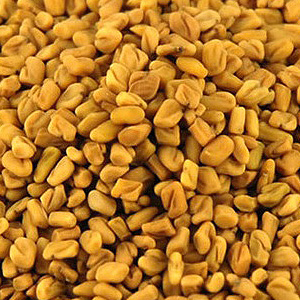
Hindi Name : Methi
Botanical Name : Trigonella foenum-graecum L
Family name : Fabaceae
Commercial part : Fruit
Fenugreek, an age-old spice, predominantly graces tables in the Middle East, Northern-Eastern Africa, and India, where it’s a pickle aficionado’s delight. Dry roasting elevates its flavor profile while mitigating bitterness. This esteemed spice garners mentions in Egyptian papyri, noted for its role in mummification, culinary use, medicinal application, and embalming.
Fenugreek seeds hold renown as a galactagogue, stimulating lactation in nursing mothers with insufficient breast milk supply. Additionally, it’s been explored for its potential to enhance breast size. Capsule forms of fenugreek are available in numerous health food stores. Furthermore, when blended with yogurt, it serves as a natural conditioner.
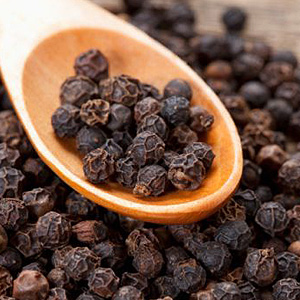
Hindi Name : Kali Mirch
Botanical Name : Piper nigrum L
Family name : Piperaceae
Commercial part : Fruit
Pepper’s optimal flavor and aroma emerge upon immediate grinding onto dishes. For spicier fare, introducing pepper during the latter stages of cooking ensures aromatic preservation. In white sauces, the choice veers towards white pepper, sidestepping black pepper to avoid a mottled visual effect. Melding green peppercorns with garlic or cinnamon crafts a spiced butter, while combining them with cream yields a vibrant sauce perfect for fish delicacies.
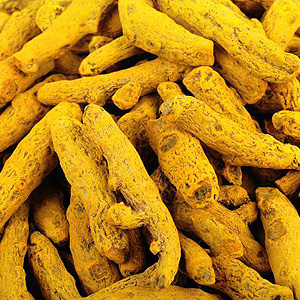
Hindi Name : Haldi
Botanical Name : Curcuma longa L
Family Name : Zingiberaceae
Commercial part : Rhizome or underground stem
Producing Centers: Andhra Pradesh, Maharashtra Tamilnadu
Turmeric finds its way into nearly every Indian dish. Curcumin, a potent component of turmeric, stimulates bile flow, aiding fat digestion. Its anti-inflammatory properties alleviate arthritis discomfort. Turmeric proves beneficial for cardiovascular health. Crafting organic turmeric pastes and ointments harness its potential. The antibacterial strength of turmeric guards against wound infections.
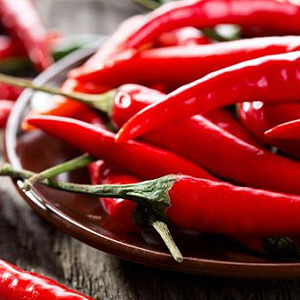
Hindi Name : Lal Mirch
Botanical Name : Capsicum annum L Capsicum frutescens L
Family Name : Solanaceae
Commercial Part : Green as well as ripe and dried pod (fruit)
The dried chili pepper emerges from the ripe, brownish-red to red capsicum plant species. Its fiery heat is savored when cooked or consumed raw, concentrated along the pod’s upper ridge. Capsaicin, produced by glands at the stem end, intensifies the heat, flowing throughout the pod. To temper the heat, removing seeds and inner membranes is effective.
Varied in length and red to brownish-red hues, whole dried chili peppers pack warmth and peppery intensity. Their robust pungency is marked by a sharp, cumulative, lingering spiciness.
Our Dried Red Chili enriches Indian cuisine with its spiciness and aroma. A staple ingredient, it enhances dishes and delicacies, guaranteeing purity and safety in consumption.

Mace, the delicate, vivid red covering enveloping the nutmeg seed, is termed the aril. Upon separation from the shell, it yields fragments referred to as blades.
Mace beautifully complements milk-based creations such as custards and cream sauces. It lends its essence to enhancing the flavor of pale-hued cakes, pastries, and notably donuts. This versatile spice elevates both clear and creamy soups, casseroles, chicken pies, and sauces.
Drying renders mace pieces resistant to crushing. While pre-ground mace offers convenience, its shelf life is comparatively shorter, necessitating careful consideration.
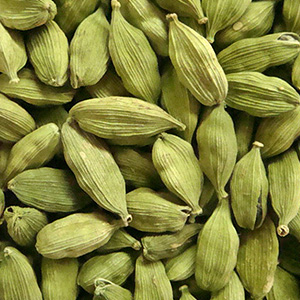
Hindi Name : Elachi
Botanical Name : Elettaria cardemomum
Family name : Zingiberaceae
Cardamom boasts a distinct, robust flavor accompanied by a profoundly aromatic scent.
Originating in India, this exceptionally flavorful and ancient spice has transcended borders, finding its place in global cuisines. Every culture has embraced cardamom, crafting unique applications for its exquisite seeds. In India, both green and black cardamom hold significance, notably enhancing the essence of meat and vegetable preparations.

Hindi Name : Adrak
Botanical Name : Zingiber officinale
Family Name : Roscoe Zingiberaceae
Commercial Part : The rhizome
Fresh ginger stands as a vital cornerstone in Asian and Oriental cuisine. Its presence graces pickles, chutneys, and curry pastes, while dried and ground ginger root contributes to a multitude of curry powders.
Ginger’s renown predominantly stems from its prowess as a digestive aid. By stimulating the secretion of digestive fluids and saliva, ginger proves effective in alleviating indigestion, gas pains, diarrhea, and stomach cramps.
In the realm of baking, ginger takes center stage in cakes and biscuits, particularly ginger snaps and gingerbread. It adds its flavorful touch to puddings, jams, preserves, and finds a role in beverages like ginger beer, ginger wine, and tea.

Hindi Name : Dal Chini
Botanical Name : Cinnamomum cassia Blume
Family Name : Blume Lauraceae
Commercial Part : Bark and leaf
Cassia, an aromatic bark akin to cinnamon, boasts unique strength and quality. Its bark is darker, thicker, and coarser, often retaining the corky outer layer. While the outer surface exhibits a rough, grayish-brown texture, the inner bark showcases a smoother, reddish-brown hue. Cost-effective compared to cinnamon, cassia is sometimes marketed as ground cinnamon. In stick form, cinnamon rolls into a single quill, while cassia is artfully rolled from both sides toward the center, resulting in a scroll-like appearance.
Stewed fruits, particularly apples, benefit from cassia’s touch, alongside mixed spices for pudding, pastry, and mulling blends. Cassia lends depth to curries, pilaus, and robust meat dishes, with its whole buds also infusing delightful flavors. Dried cassia leaves, known as the Indian herb tejpat, are sometimes mistaken for ‘bay leaves.’ This versatile spice contributes to Chinese five-spice blends.
Cassia extends its influence beyond the culinary realm, boasting tonic, carminative, and stimulant properties. It aids in alleviating nausea, flatulence, and is employed alone or combined to address diarrhea.
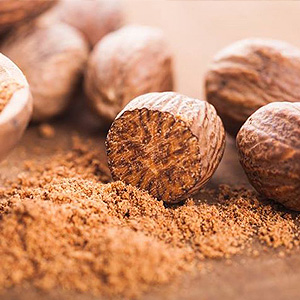
The nutmeg seed resides within a mottled yellow, edible fruit, roughly resembling a small peach in size and shape. Upon splitting in half, the fruit unveils a net-like, vibrant red cover, known as the aril. This prized aril is collected, dried, and traded as mace. Beneath the aril lies a lustrous, dark, nut-like pit, enclosing the oval-shaped seed—the nutmeg.
Nutmeg commonly graces the realm of sweet, spiced creations: pies, puddings, custards, cookies, and spice cakes. It seamlessly complements various cheeses, earning its place in soufflés and cheese sauces.
In moderate amounts, nutmeg aids digestion, diminishes flatulence, stimulates appetite, and addresses issues like diarrhea, vomiting, and nausea. Nutmeg’s captivating flavor and fragrance emanate from myristica oil, housing myristicin—a compound with potentially narcotic properties.
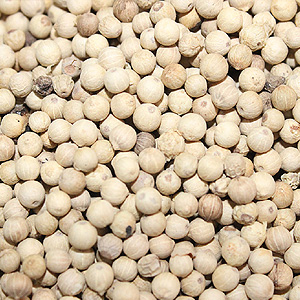
Pepper, among the most ancient and renowned spices globally, hails from India, rightfully earning its title as the “King of Spices.” This perennial, climbing vine thrives natively along the Malabar Coast of India.
In white sauces, the choice leans towards white pepper over black pepper, which could create a speckled visual effect.
Pepper sparks the taste buds, triggering reflexes that enhance gastric secretions, ultimately fostering better digestion and offering relief from gastrointestinal discomfort and flatulence. With the ability to soothe nausea and elevate body temperature, pepper emerges as a valuable asset in addressing fevers and chills.

